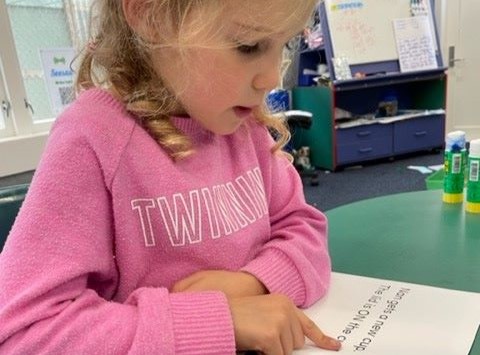
Image supplied by BLSA.
Although English is spoken by 95 percent of the population, the next common languages spoken are Te reo Māori (186,000 speakers), Samoan (102,000 speakers), Northern Chinese including Mandarin (95,000 speakers), and Hindi (69,500 speakers). The 2018 census data indicated 23,000 people use New Zealand Sign Language.
Read the latest print edition of School News HERE
The languages spoken by five to nine-year-old children in Aotearoa New Zealand reflect this pattern with Te reo Māori, Samoan and Northern Chinese the most common languages other than English.
Understanding how our young children who enter school learning English as their second or other language succeed in their early literacy development is critical. We also need to understand how English literacy teaching practices reflect our improved understanding of the cultural and social importance of bilingualism and indigenous languages such as Te reo Māori.
We developed the BSLA specifically for our New Zealand education context. It is based on the “science of reading”, and promotes a strengths-based and culturally responsive approach to early literacy teaching. It is set within a Multi-Tiered System of Support framework, where Tier 1 (universal or class level teaching) and Tier 2 (small group targeted teaching for learners with greater needs) are aligned. This maximises BSLA teaching intensity for children who need more support in acquiring foundational skills in phonic, phoneme awareness, morphology, word decoding, spelling oral narrative and vocabulary skills.
The purpose-built assessment tool used in BSLA offers teachers a precise and detailed understanding of each student’s progress.
Research conducted by BSLA indicates that ELL respond very well to BSLA teaching. They showed similar positive-growth rates following 10 weeks of Tier 1 (class level) to their non-ELL peers. Despite demonstrating lower phoneme awareness skills at baseline, the ELL performed similarly to non-ELL in word decoding and spelling tasks after 10 weeks of BSLA. Predictors of growth analyses indicated that ELL from areas of low socio-economic deprivation, who used a greater number of different words in their English story retells at school entry/baseline assessment, and females made the most growth in their phonic and phoneme awareness development.
The data showed 11 percent of the ELL and 13 percent of the non-ELL cohorts received approximately 10 weeks of supplementary BSLA Tier 2 (targeted small group) teaching. At the next monitoring assessment (20 weeks post baseline assessment) the ELL cohort showed accelerated growth in listening comprehension, phoneme-grapheme matching and phoneme blending skills, catching up to their non-ELL peers.
This data suggests when our junior school teachers are well supported to implement research based and culturally responsive early literacy teaching, children in their class who are ELL can quickly develop foundational literacy skills in English. With additional Tier 2 support we can expect many ELL to show accelerated progress, catching up to their peers in some areas of oral language and phoneme awareness during their first year at school.
Kathryn Sears has worked as a BSLA facilitator for Better Start Literacy Approach across various schools in Ngā Hau e Whā Cluster 13.
“My experience with the Better Start Literacy Approach in diverse school settings has consistently demonstrated its effectiveness in fostering positive student outcomes, irrespective of socioeconomic background. From boosting confidence and foundational knowledge to providing targeted instructional guidance and emphasising the importance of familial support, BSLA proves to be a comprehensive and impactful approach to literacy learning,” Ms Sears said.
“It is noteworthy that the impact of this approach transcends the school’s decile rating, and consistently with positive results. Over ten weeks, the transformation in student performance is remarkable, with graphs transitioning from a bottom-heavy distribution to a top-heavy one.”
Bullying contributes to poor wellbeing and absenteeism in New Zealand. Discover how you can address…
Free school lunches will continue under a modified model which will reportedly see $107 million…
A new interactive website showing daily attendance figures was launched last week as part of…
Two reviews of early literacy approaches and an accompanying Ministry of Education commentary show promising…
We must have bipartisan decision-making for education, says academics Bronwyn E. Wood and Taylor Hughson…
The OECD’s new report makes several policy recommendations for our education sector in the hopes…
This website uses cookies.